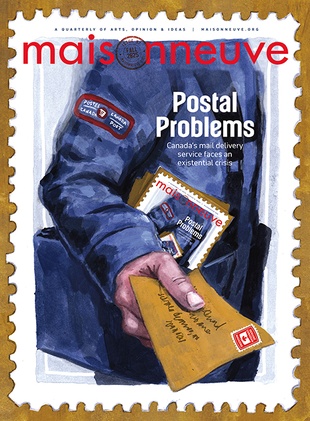Piracy Is Good
(Sometimes)
If there's one thing Hollywood loves, to be onscreen. Piracy, for example. Over the last few years, big media organizations have been sounding increasingly urgent alarms about the dangers of intellectual-property theft. Having observed the alleged effect of Napster and Gnutella on the music industry, the Motion Picture Association of America has been trying to play good cop/bad cop with its customers-producing finger-wagging commercials (in one, a stuntman points out that it would be nice if you actually paid for the DVD containing the chase scene he risked his life for) while attempting to introduce locks in home electronics that would prevent people from recording TV broadcasts. Any movie executive will give it to you straight from the hip: piracy is bad.
Except it's not. Sometimes.
One segment of the entertainment world has done pretty well through piracy: the Japanese animation industry in North America. Anime (pro-nounced "ah-nee-may") has been on this continent's airwaves for forty years now. If you've ever owned a TV, you are probably familiar with iconic anime shows and movies like Astro Boy, Star Blazers, Akira, Pokémon, Dragon Ball and Yu-Gi-Oh. Since the mid-nineties, anime in North America has largely dispensed with the cheesy dubbing and the cheesier translations (in G-Force, Dr. Kozaburo Nambu was "Dr. Brighthead") and become an entertainment powerhouse.
In 2003, the Japanese daily Asahi Shimbun reported that the American anime industry had pulled in over $4 billion us in 2002-and that figure is only increasing. Hayao Miyazaki's Spirited Away won the Oscar for 2002's Best Animated Feature Film, beating out, among others, Disney's Lilo & Stitch and Fox's Ice Age. Since Miyazaki's Princess Mononoke arrived on these shores in 1999, big-name film critics throw around the director's name whenever they have a chance.
To understand how it all happened, we have to travel back to 1986. The number of people without computer-science degrees who have heard of the Internet fits into a parking lot. There are only three broadcast networks. "Portable audio" refers to a bright yellow Sony Walkman. The anime series Robotech (in which Earth finds itself embroiled in an interplanetary war) has been on American airwaves for a year, and Japan is experiencing an explosion of anime shows, movies and direct-to-video titles. Most importantly, VCRs are just common enough that if you don't have one yourself, you know someone who does. And-happy coincidence-Japan uses the same video standard as North America: NTSC.
So, I know someone who knows someone who lives in Hokkaido. Since my friend loves caper films, his buddy in Japan tapes weekly episodes of Cat's Eye (three cute sisters run a café by day and pull off heists by night) and mails them to him at the end of the month. These tapes are copied for me. I might then swap my tapes with someone whose Japanese friend rents and copies every instalment of Lupin III (the thieving grandson of famous French fictional burglar Arsène Lupin regularly outwits the dogged inspector Zenigata and occasionally saves the world) the instant they're available at the video store in Kobe.
That's how it started for me. Of course, it didn't stay that way-much of this material had science-fiction and fantasy themes, so anime started to creep into SF conventions and fan clubs. Anime-specific organizations sprouted up soon thereafter, and fans started to connect by swapping newsletters and logging onto now-archaic electronic bulletin boards like CompuServe, GEnie and BIX. We started to exchange tapes through the mail with people we'd never met. Oh, and let's not forget the road trips to weekend swapfests, our cars loaded down with VCRs, TVs, boxes of videocassettes and far too many Cheese Puffs.
By 1987, anime had found a home on the Internet. Not on the Web-that hadn't been invented yet-but on the text-only public discussion system known as Usenet, which allowed anyone with a modem to get in touch with fellow anime lovers. The whole thing was starting to look like every media corporation's worst nightmare. By the prevailing logic of the doomsayers, we were destroying an industry that hadn't yet been born.
Except we weren't.
A code of ethics evolved among anime fans. It was okay to knock off dozens of copies of your favourite show and hand them out to people, but profiting from copies was a definite no-no, with fans scorning anyone who did. At conventions, people caught selling tapes were summarily shown the door. At the end of the eighties, fans became organized enough-and technology was cheap enough-to translate and subtitle their own tapes, producing what are called "fansubs."
Around the same time, six anime distribution companies entered the North American scene. So the code of ethics adapted. It was understood that when a company licensed a show for which you had a fansub, you immediately withdrew your version from circulation. Intentionally or not, this fostered a symbiotic relationship between fans and distributors. The popularity of a title among fans lent the title credibility; a domestic release generally showcased a professional trans-lation and pristine video quality, sup-planting fifth-generation bootlegs. The word of mouth provided demand, and the lack of fansubs meant the companies had the supply. Everybody won.
I recently asked Fritz Attaway, an executive vice-president and gen-eral counsel at the Motion Picture Association of America, how he defines piracy. His answer: "Any unauthorized use of a copyrighted work that is not permitted by law." So let's be clear: code of ethics or no, every time we copied a tape and gave it away, we were breaking the law. That we weren't charging money made no difference; we were stealing intellectual property.
And yet the companies releasing anime here were able to make inroads with the help of us thieves. Before the Pokémon explosion, most anime-specific magazines were created by fans or had prominent fans on staff. The first American anime conventions were entirely fan-run, some with guests (from both sides of the Pacific) who were considered the rock stars of the medium. To this day, the press releases of heavy-hitting distributors of anime like Disney, DreamWorks SKG, Sony and Warner Bros. use information that fans provide.
And where does this fan know-how come from? Piracy.
There's a lesson to be learned here. Since much of the early tape-copying activity was semi-public, it wouldn't have been hard for companies to crack down on some of the higher-profile clubs or individuals. Yet thanks to a sort of benign ignorance and some semi-intentional shepherding of enthusiasm, an industry was born. Of the six companies I mentioned earlier, five are still in operation, and many others have joined the fray. Would they have reached the same heights of success without piracy? Probably. But it was piracy that got the distributors here quicker and more cheaply-and that gave them the priceless marketable cachet of an underground phenomenon.
Enjoying Maisonneuve's online offerings? Click here for a half-year trial subscription to Maisonneuve's print edition, completely free!





